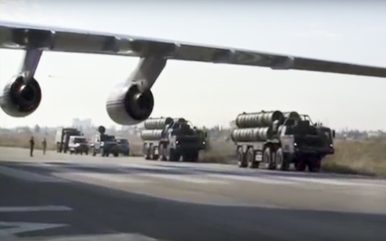By Franz-Stefan Gady
 The People’s Liberation Army (PLA) is set to conducts its first live fire drill of its newly acquired first regimental set of Russian-made S-400 Triumf advanced interceptor-based air defense systems (NATO reporting name: SA-21 Growler) in the coming days, according to an anonymous Russian source familiar with the matter. “It is planned that in late July-early August the unit of the Chinese People’s Liberation Army, which underwent training in Russia, will carry out the firing against a simulated ballistic target at a Chinese firing ground,” the source told TASS news agency on July.
The People’s Liberation Army (PLA) is set to conducts its first live fire drill of its newly acquired first regimental set of Russian-made S-400 Triumf advanced interceptor-based air defense systems (NATO reporting name: SA-21 Growler) in the coming days, according to an anonymous Russian source familiar with the matter. “It is planned that in late July-early August the unit of the Chinese People’s Liberation Army, which underwent training in Russia, will carry out the firing against a simulated ballistic target at a Chinese firing ground,” the source told TASS news agency on July.
The PLA officially took ownership of the first S-400 unit last week, according to Russian media reports. The Russian Ministry of Defense (MoD) and the Russian Federal Service for Military Technical Cooperation as well as the PLA have so far not publicly commented on either matter.
Russia began delivering S-400 components, including launchers and mobile radar systems, to China in April. The last cargo shipment reportedly took place in early May. Russian personnel, specialized in operating the S-400 has been handing over the S-400 systems to the PLA over the past months, a process reportedly completed last week.
China will reportedly receive a total of two S-400 regiments for an estimated $3 billion with the second regimental set expected to be delivered by the end of 2018. It is still unknown when the first S-400 unit will enter service with the PLA, although a rapid induction, as evidenced by the recent announcement of the first test firing, can be expected. As I explained earlier this month:
A S-400 regiment is divided up into two battalions (also called divisions in the Russian military), which in turn are split into two batteries. A battery can consist of up to 12 transporter erector launchers (TELs), although 4 to 8 TELs per unit are more common. In addition to the TELs, each battery includes a target acquisition and engagement (fire control) radar systems and a command post, as well as an additional fire control radar system.
A road-mobile S-400 battery can deploy within five to ten minutes and engage up to 36 targets simultaneously.
Furthermore, I noted yesterday:
It is not known what missiles China has ordered from Russia. According to some reports, the first regimental unit delivered to China will be armed with the 48N6E2, next to other missiles, whereas the second regiment might receive the 40N6E, the export variant of the 40N6. The 40N6 is the S-400’s most advanced missile interceptor and is expected to be inducted into service with the Russian military this month or next.
The 40N6 missile has an estimated operational range of 400 kilometers (248.5 miles) and can reach a maximum altitude of up to 185 kilometers (607,000 feet). The 40N6 is assumed to be capable of exo-atmospheric interception of intermediate-range ballistic missile warheads in their terminal phase.
The S-400 can also fire two additional missiles, the 9M96E and 9M96E2 with respective ranges of 40 km (25 miles) and 120 km (75 miles) each, as well as the 48N6E, with an estimated range of 150 kilometers (93 miles), and the improved 48N6E2 missile with a reported range of 195 kilometers (121 miles).
No comments:
Post a Comment